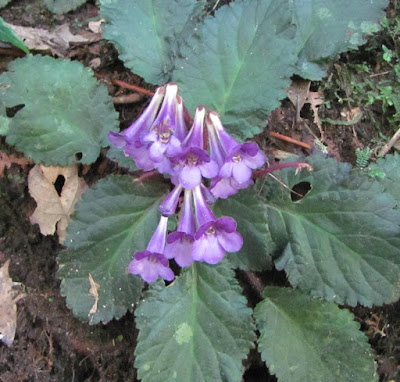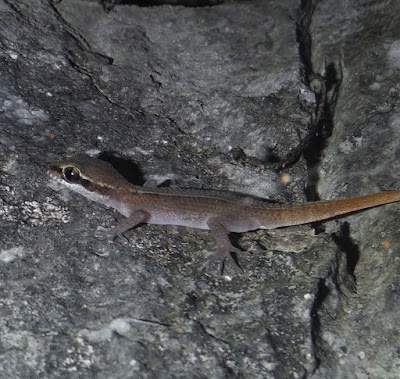[Most Recent Entries] [Calendar View]
Thursday, March 30th, 2017
| Time | Event | ||||
| 1:26a | [Botany • 2017] Oreocharis caobangensis • A New Species (Gesneriaceae) from Cao Bang Province, northern Vietnam
Abstract A new species of Oreocharis (Gesneriaceae) from Cao Bang province, northern Vietnam is described and illustrated. The new species, Oreocharis caobangensis, is most similar to O. lungshengensis, but it can be easily distinguished from the latter by its petioles densely brownish villous, lateral veins 6–8 pair on each leaf blade, bracts smaller (1.5–2 mm long), corolla outside pubescent and pistil glabrous, 18–20 mm long. Keywords: Flora of Vietnam, Gesneriaceae, new taxon, Oreocharis, Eudicots, Vietnam
Oreocharis caobangensis T.V.Do, Y.G.Wei & F.Wen, sp. nov. Etymology:— The specific epithet refers to Cao Bang Province in northern Vietnam where Oreocharis caobangensis was found. The type location of this new species is in Phia Oac-Phia Den National Park, a famous national park in Cao Bang Province. Truong Van Do, Yi-Gang Wei and Fang Wen. 2017. Oreocharis caobangensis (Gesneriaceae), A New Species from Cao Bang Province, northern Vietnam. Phytotaxa. 302(1); 65–70. DOI: 10.11646/phytotaxa.302.1.6 | ||||
| 9:24a | [Herpetology • 2017] Dixonius kaweesaki | จิ้งจกดินสามร้อยยอด • A New Limestone-dwelling Leaf-toed Gecko (Gekkonidae: Dixonius) from Khao Sam Roi Yot Massif, peninsular Thailand
Abstract We describe Dixonius kaweesaki sp. nov. from Khao Daeng, a limestone mountain in Khao Sam Roi Yot massif, Prachuap Khiri Khan Province, peninsular Thailand. It is diagnosed from all other species by a combination of maximal SVL of 41.6 mm; 12 or 13 longitudinal rows of dorsal tubercles; 24 longitudinal rows of ventrals across the abdomen; a continuous series of 9–11 precloacal pores in males, no pores in females; and two bold dark stripes from the snout to the base of the tail separated by a contrasting light vertebral stripe. It is the eighth species in the genus Dixonius. Lastly, we discuss the type locality of Phyllodactylus paviei, currently regarded as a junior subjective synonym of Dixonius siamensis. Keywords: Reptilia, Thai-Malay Peninsula, Khao Sam Roi Yot, Dixonius kaweesaki sp. nov.
Etymology. The specific epithet honors the Thai naturalist Kaweesak (Toi) Keeratikiat from Bangkok, in recognition to his help in our herpetological field surveys, and who collected the type series. We suggest the following common names: Djing-djok din Sam Roi Yot (Thai; จิ้งจกดินสามร้อยยอด), Sam Roi Yot Leaf-toed Gecko (English), Dixonius de Sam Roï Yot (French), Samroiyot Blattfingergecko (German). Sumontha, Montri, Nirut Chomngam, Eakarit Phanamphon, Parinya Pawangkhanant, Chutinton Viriyapanon, Wanlada Thanaprayotsak and Olivier S. G. Pauwels. 2017. A New Limestone-dwelling Leaf-toed Gecko (Gekkonidae: Dixonius) from Khao Sam Roi Yot Massif, peninsular Thailand. Zootaxa. 4247(5); 556–568. DOI: 10.11646/zootaxa.4247.5.2 |
| << Previous Day |
2017/03/30 [Calendar] |
Next Day >> |




